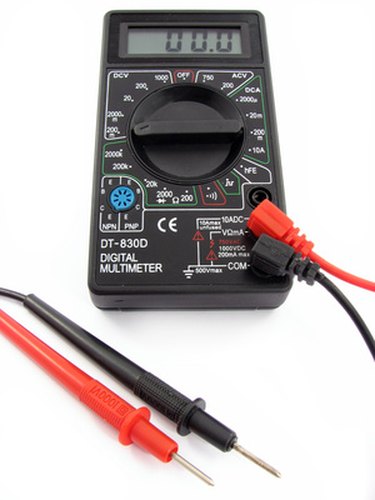
If one of your home appliances has suddenly stopped producing heat, don't rush out to start shopping for a new appliance just yet. Many problems can be solved by troubleshooting and replacing a specific part, such as the heating element or thermal overload switch. Because replacing the heating element in your appliance is the more difficult repair, it's always a good idea to test your thermal overload switch first. An important safety feature, the thermal overload switch cuts off the flow of electricity to the heating element when your appliance starts to overheat.
Step 1
Unplug your appliance from its power supply before attempting to test its thermal overload switch. Make sure to disconnect the supply of gas from gas appliances.
Video of the Day
Step 2
Remove the appropriate appliance panel to access the thermal overload switch in your appliance. Locate the thermal overload switch behind the bottom toe or back panels of most residential clothes washers or dryers. Dishwasher thermal overload switches can usually be found behind the bottom toe panel. Remove the screws that hold the panel in place to free it. Note that some appliance panels are held in place with small metal clips. Apply pressure to these clips with a putty knife or flathead screwdriver to free the panel.
Step 3
Locate a thin strip of white plastic with two wires connected to it. This is the thermal overload switch. Pull gently on the two wires to disconnect them from the thermal overload switch.
Step 4
Turn on your digital multimeter and set it to read Rx1 resistance. The digital multimeter is an electronic device that tests the continuity of your thermal overload switch to help you determine whether it is faulty.
Step 5
Touch the leads on your digital multimeter to both sides of the thermal overload switch. Watch the needle on the digital multimeter display to determine if your thermal overload switch needs to be replaced. A functional thermal overload switch will cause the needle to move to "0". If your thermal overload switch is faulty, the needle on the digital multimeter will not move at all.
Video of the Day